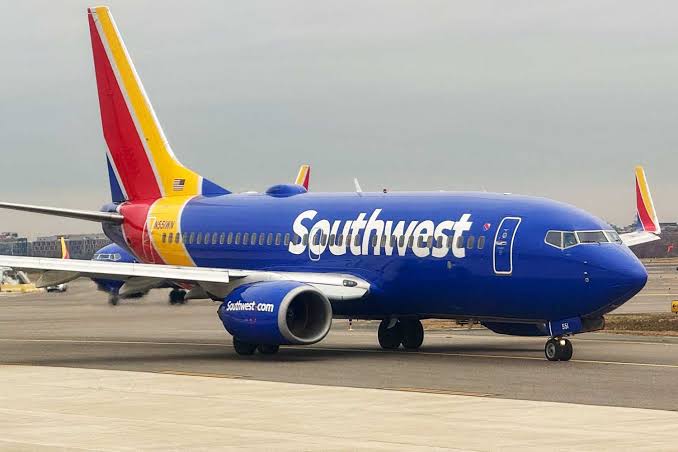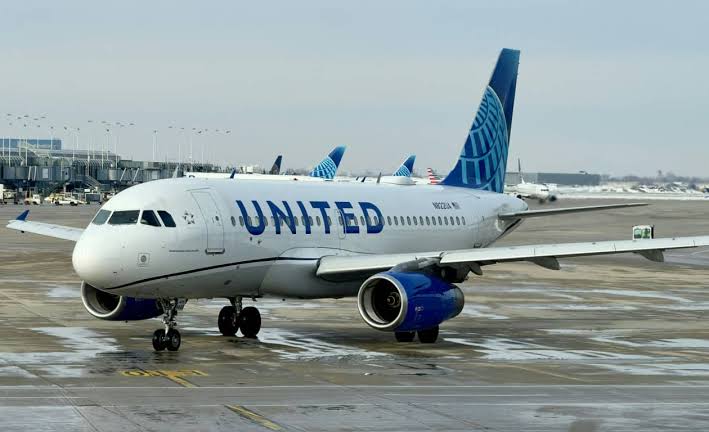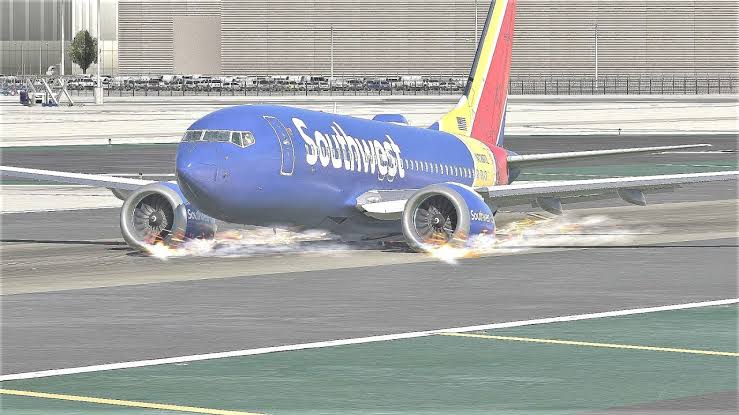Southwest Airlines Makes Emergency landing At Houston…Here is What Happened
Southwest Airlines Flight 3006, bound for Los Cabos, Mexico, was forced into an emergency landing at Houston’s William P. Hobby International Airport just moments after takeoff. The harrowing incident—though ultimately resolved with no injuries—underscores the precision and training required in aviation emergencies, as well as the crew’s calm under pressure.
🛫 Timeline of the Incident
11:15 a.m. CDT: Flight 3006, a Boeing 737, departed Hobby Airport with 134 passengers. Shortly after ascending, the crew reported an engine fire and initiated a return to the airport .
Circling and Communication: Amidst the flight’s ascent, a loud boom and visible shaking alarmed attendees. Passenger Michael Weber recounted that “the whole plane began shaking,” prompting nervous glances among passengers, though the captain quickly reassured everyone, saying their training prepared them precisely for this moment .
11:30 a.m. CDT: The aircraft landed safely on a taxiway. The fire in the engine was extinguished rapidly, alongside a small grass fire that had ignited near the runway .
Immediate Evacuation: Emergency slides were deployed, and all passengers were evacuated via the left side and onto the tarmac. Some waited momentarily on the wing until first responders arrived. All 134 passengers exited safely, with no injuries reported .
—
Voices from the Cabin
Local media caught firsthand accounts that paint a vivid picture of the tense atmosphere:
> **“The whole plane began shaking,”** said Weber.
**“Apparently, some of the grass lit on fire a little bit,”** he added, describing the scene just after touchdown .
Weber and his companions—two families from New Orleans—felt immediate fear but found reassurance in the crew’s professionalism. He texted his father back home, who later admitted he was praying “on his knees,” relieved when his son confirmed they were safe .
—
Emergency Response and Safety Measures
Houston Fire Department Airport Rescue Firefighters were on standby. They swiftly put out the engine blaze and the small grass fire trailing the aircraft .
FAA Involvement: The Federal Aviation Administration is investigating the incident to determine the exact cause of the engine fire .
Southwest’s Immediate Response emphasized safety and care: “Nothing is more important to Southwest than the safety of our customers and employees,” the airline said, commending the crew and assisting passengers in continuing their journey .
—
What Went Right: Lessons in Crisis Management
1. Rapid Recognition & Action
The crew detected the engine anomaly almost immediately after liftoff, triggering a swift return. This fast response likely prevented escalation and secured a controlled landing.
2. Crew Training and Reassurance
The crew effectively communicated with passengers, easing anxieties and guiding everyone through evacuation. This calm professionalism was highlighted by both passengers and Southwest in their praise.
3. Preparedness on the Ground
Houston’s airport fire teams were ready for emergencies and extinguished the engine fire and grass blaze swiftly—critical to avoiding further damage or risk.
4. Passenger Evacuation Protocol
The use of emergency slides, evacuation onto a taxiway, and orderly exit procedures underscore successful training and execution of emergency protocols.
—
Broader Industry Context
This incident arrives amidst heightened scrutiny of airline safety. While air travel remains statistically the safest mode of transport, recent mechanical incidents—including a February event involving smoke aboard another Southwest flight and a high-profile engine-cowling detachment on a Southwest jet in Denver in 2024—have kept public awareness alert .
Nevertheless, industry experts continue to uphold the aviation sector’s rigorous safety standards. As noted by the AP, “federal officials reaffirm flying remains the safest mode of transportation … statistics support that” .
—
Aftermath: What Comes Next?
Passenger Resettlement
All passengers were reassigned to alternate Southwest flights, with baggage transferred to their onward journeys .
FAA Investigation
The agency will examine maintenance records, crew actions, and engine components to determine root cause and enhance future safety.
Southwest’s Review
Expect a thorough internal review focusing on mechanical integrity, decision-making, and procedures, followed by updated training or policy adjustments.
—
The Human Angle
While technical details form much of the story, the emotional impact cannot be understated. Weber and his family described raw anxiety turning into resolute calm thanks to crew assurances. His father’s prayer underscores the human stakes present in such incidents . These moments highlight not just procedural responses, but empathy, leadership, and care during fear.
—
Final Reflections
The swift, coordinated resolution of Flight 3006’s crisis provides several key takeaways:
Rapid communication and decision-making can defuse high-risk situations.
Crew training and execution prove vital in maintaining calm and guiding passengers.
Effective emergency services ensure fire suppression and passenger safety.
Transparent follow-up by regulators and airline leadership bolsters public trust.
Although no passengers were harmed, Flight 3006 serves as a case study in aviation resilience. From alarming engine flames to an orderly evacuation and continued journey, this event illustrates how preparedness, training, and coordination can transform potential disaster into a success story.
—
As the FAA investigation continues, Southwest and the broader aviation community will likely draw new insights to fortify safety systems. For passengers, the incident is both a reminder of the rare but real challenges in flight, and of the robust layers of training, regulation, and execution that safeguard every journey.
If you’d like more in-depth technical analysis, background on emergency procedures, or follow-up on the FAA findings, I’m happy to dive deeper.






